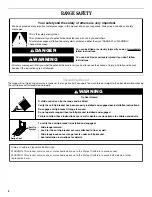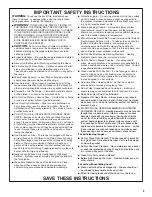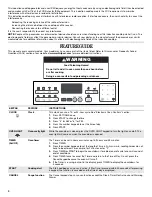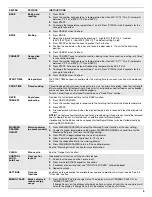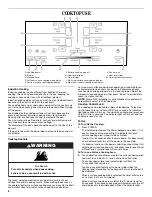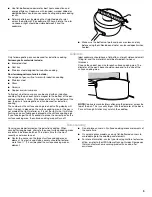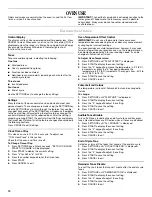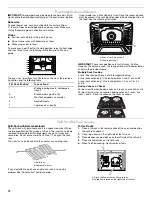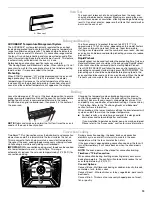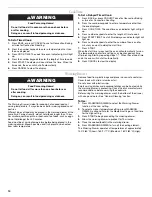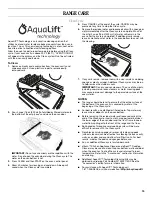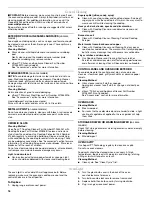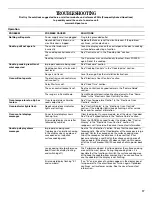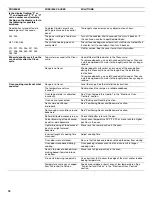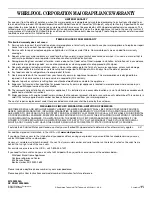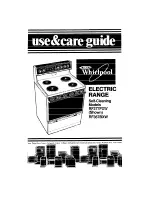
9
■
Use flat-bottomed cookware for best heat conduction and
energy efficiency. Cookware with rounded, warped, ribbed or
dented bottoms could cause uneven heating and poor cooking
results.
■
Determine flatness by placing the straight edge of a ruler
across the bottom of the cookware. While you rotate the ruler,
no space or light should be visible between it and the
cookware.
■
Make sure the bottoms of pots and pans are clean and dry
before using them. Residue and water can leave deposits when
heated.
Cookware
Only ferromagnetic pans can be used for induction cooking.
Ferromagnetic materials include:
■
Enameled steel
■
Cast iron
■
Stainless steel designed for induction cooking
Non-ferromagnetic materials include:
These types of pans will not work with induction cooking.
■
Stainless steel
■
Glass
■
Ceramic
■
Copper or aluminum pans
To find out whether your pans can be used with an induction
cooktop, flip the pan over, hold a magnet to the bottom of the pan,
and see whether it sticks. If the magnet sticks to the bottom of the
pan, the pan is ferromagnetic and can be used for induction
cooking.
The number on the surface cooking area heat setting display will
flash if no pan is placed on the surface cooking area, or the pan is
not made of the right material, or it is not the right size. It will stop
flashing once a suitable pan is placed on the surface cooking area.
If you take longer than 90 seconds to place the correct pan on the
surface cooking area, the surface cooking area will turn off.
Ideal cookware should have a flat bottom, straight sides and a well-
fitting lid, and the material should be of medium-to-heavy
thickness.
Choose the correct pan size for each surface cooking area. The
diameter of the pan’s base should correspond to the size of the
surface cooking area.
NOTE: Cookware manufacturers often give the diameter across the
top of the pan. This is usually larger than the diameter of the base.
Pans with rough finishes may scratch the cooktop.
Home Canning
Canning can be performed on the induction cooktop. When
canning for long periods, alternate the use of surface cooking areas
or elements between batches. This allows time for the most
recently used areas to cool.
■
Center the canner on the largest surface cooking area or
element. On electric cooktops, canners should not extend
more than ½" (1.3 cm) beyond the surface cooking area or
element.
■
Do not place canner on 2 surface cooking areas or elements at
the same time.
■
On ceramic glass models, use only flat-bottomed canners to
avoid damage to the cooktop and elements.
■
For more information, contact your local agricultural extension
office, or refer to the USDA Home Canning Guides. Companies
that manufacture home canning products can also offer
assistance.
1
2
3
4
5
6
7
8
9
1 0
1 1
1 2
1 3
1 4
1 5
1 6
1 7
1 8
1 9
2 0
1
2
3
4
5
6
7


